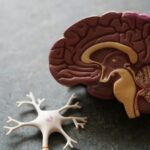November 13, 2025
2 min watch
Key takeaways:
- Educating children about juvenile idiopathic arthritis and asking them to teach it back can improve understanding of the condition.
- The method can also improve independence and medication adherence.
SAN ANTONIO — Teaching patients with juvenile idiopathic arthritis about their disease and asking them to “teach back” what they have learned can improve outcomes, said a presenter at the 2025 Rheumatology Nurses Society annual conference.
“This study is important because we noticed a knowledge deficit with our teens diagnosed early in childhood,” Felicia Johnson, RN, MSN, AMB-BC, of the pediatric rheumatology department at UChicago Medicine, told Healio.

“We are hoping this quality-improvement study will bring more attention to the teach-back method for children with JIA,” Felicia Johnson, RN, MSN, AMB-BC, told Healio.
Johnson presented a poster describing an ongoing study assessing the teach-back intervention’s impact in JIA, and said the method has improved knowledge and skills in patients with other chronic diseases.
The quality improvement project will use the teach-back intervention for 12 patients with JIA aged 14 to 22 years. Participants will be given written educational handouts with visuals at four clinic visits over 12 months. Clinicians will then engage in discussions that will allow the patients to teach back what they have learned.
The researchers will administer pre- and post-assessment evaluations to determine the effectiveness of the method.
“We wanted to intervene by using a teach-back method to help them understand their disease,” Johnson said. “It helps them with medication adherence when they can understand the disease, treatments, and symptoms that they have.”
Communication between doctor and patient can also improve with the teach-back method, according to Johnson.
“It helps with shared decision-making,” she said.
Johnson and colleagues also hope to set patients with JIA on a better course after they leave pediatric care.
“[The teach-back method] also helps with independence as they grow older,” she said.
As the researchers await the results of that specific intervention, Johnson also discussed a literature review conducted by her group for articles detailing the use of the teach-back method in other clinical scenarios.
“It showed that the teach-back method for children with other chronic diseases was an effective method for teaching disease etiology, symptom management and also treatments,” she said.
Building on that small body of literature could be critical for improving outcomes in the JIA setting, according to Johnson
“There is very limited research for the teach-back method for youth in JIA,” she said. “We are hoping this quality-improvement project will bring more attention to the teach-back method for children with JIA.”
For more information:
Felicia Johnson, RN, MSN, AMB-BC, can be reached at fjohnson1@uchicagomedicine.org.











